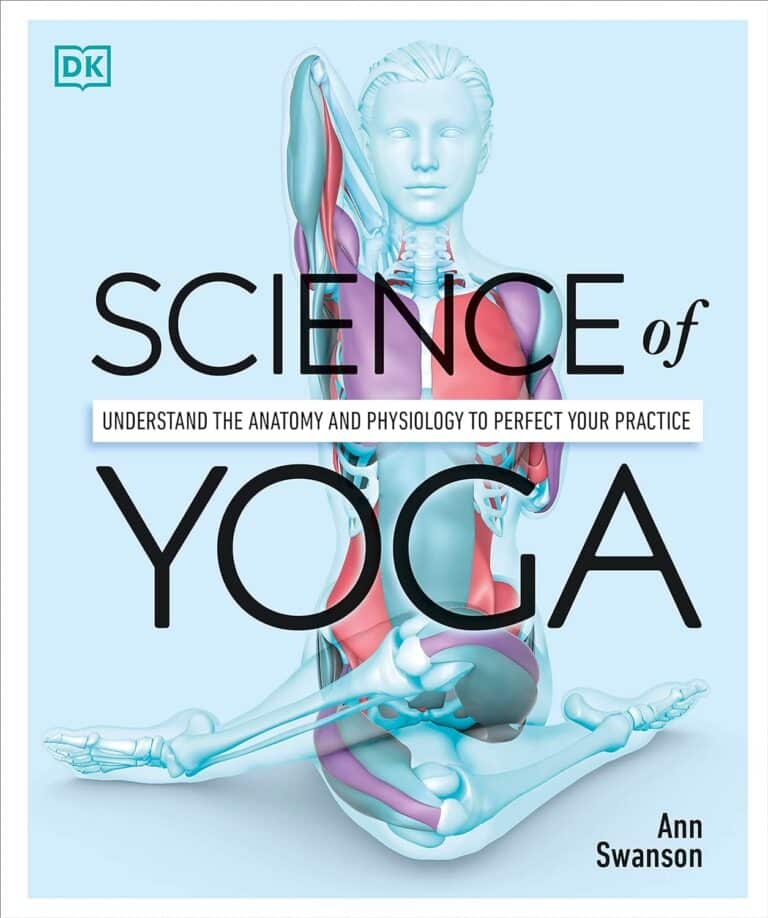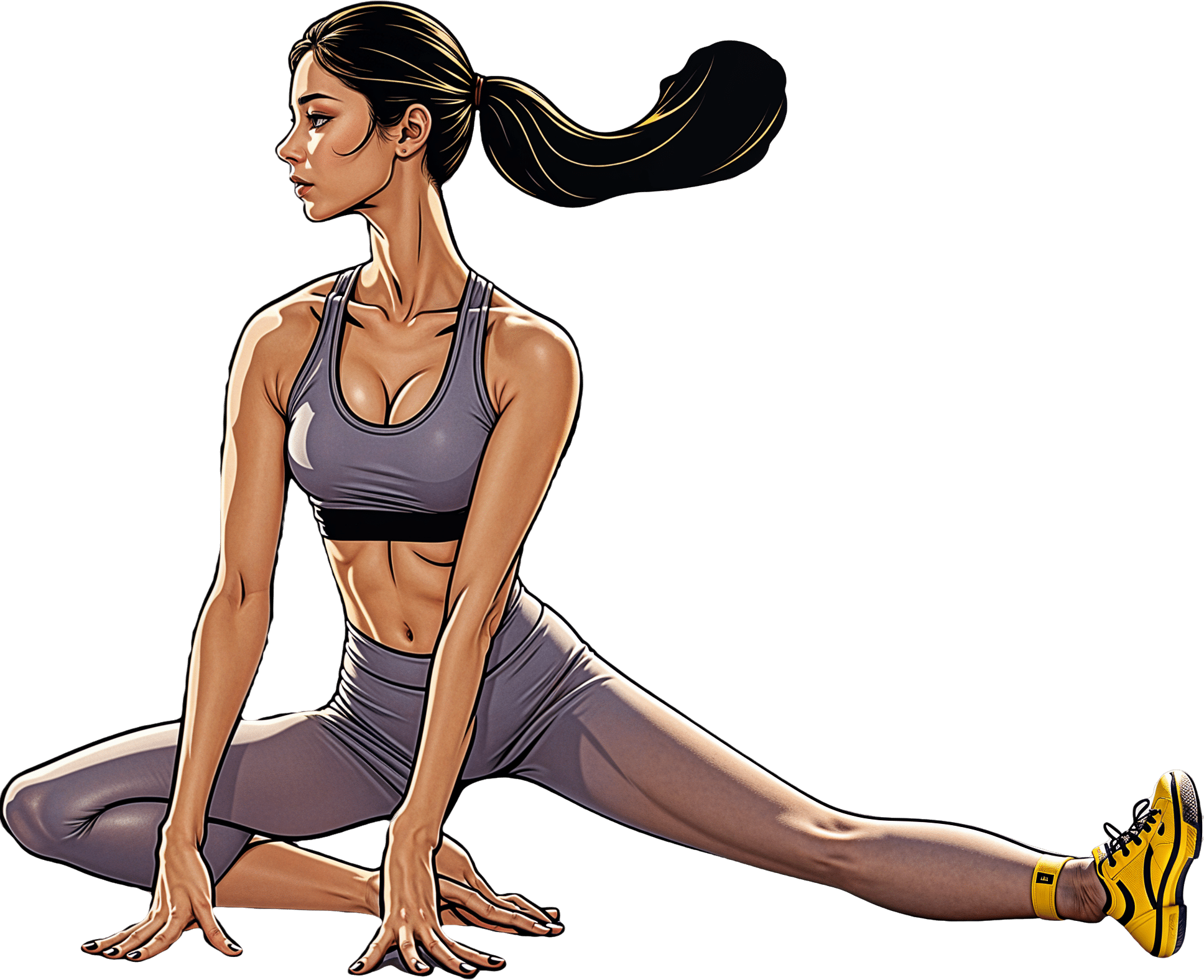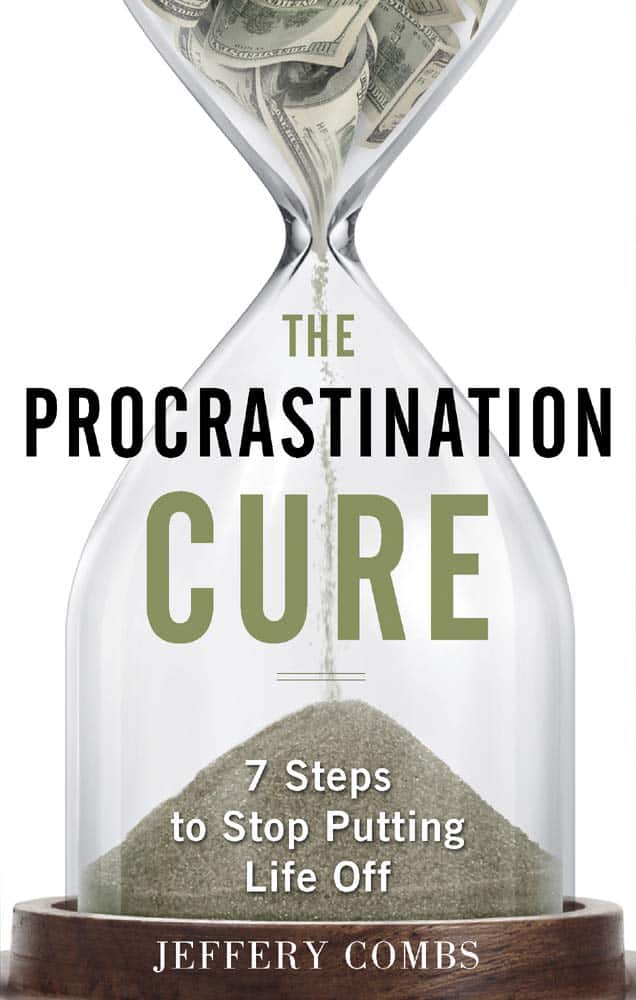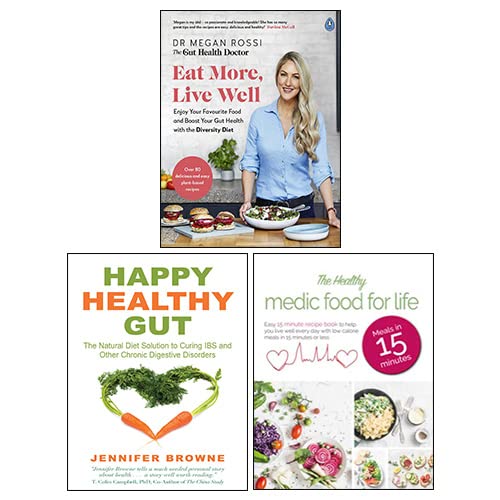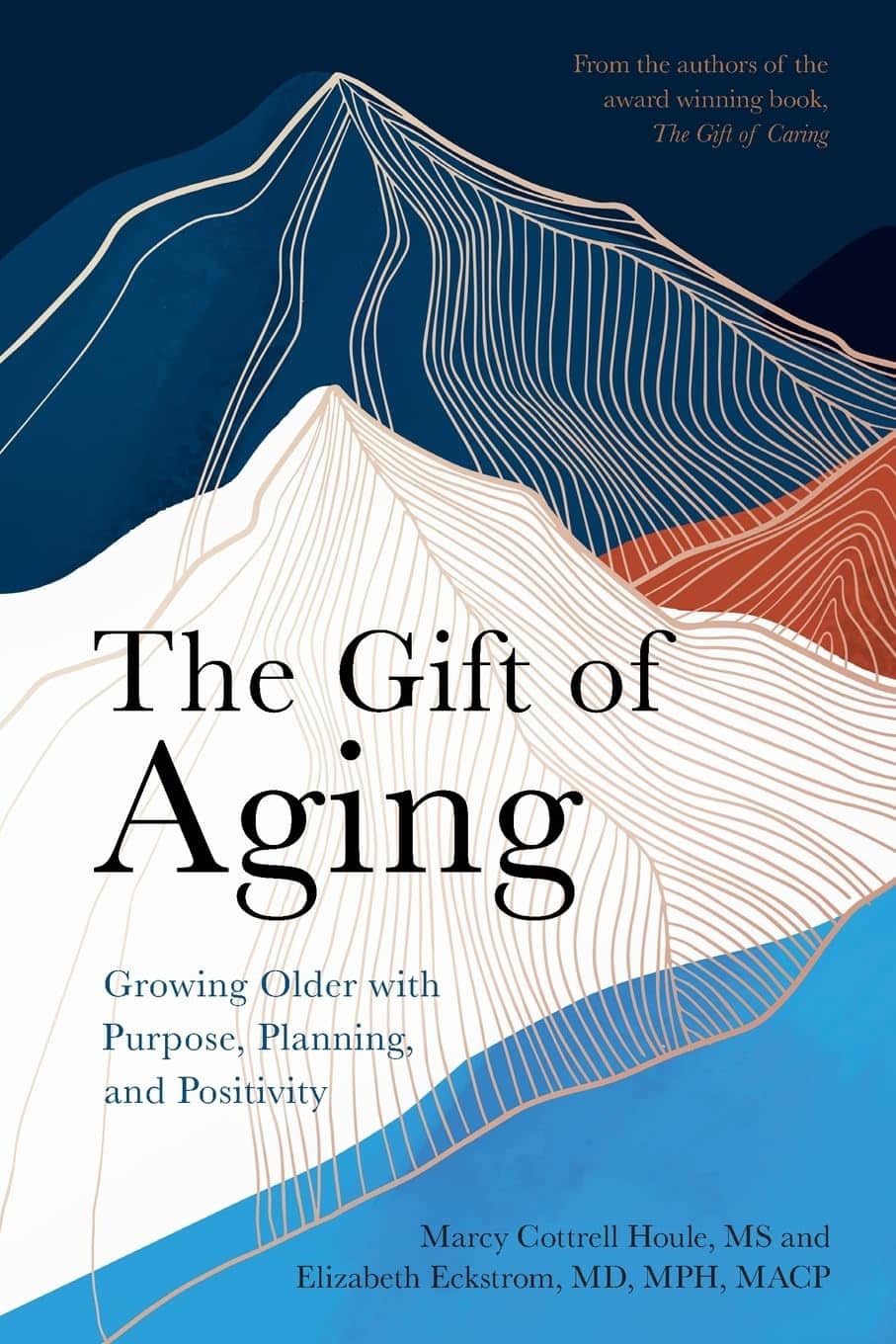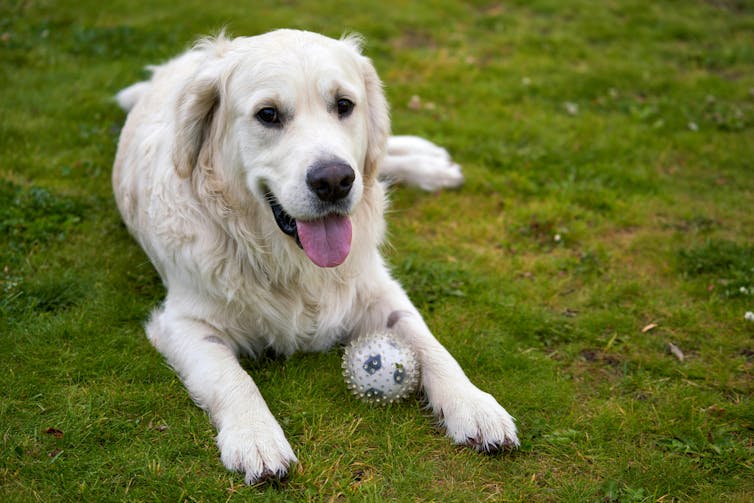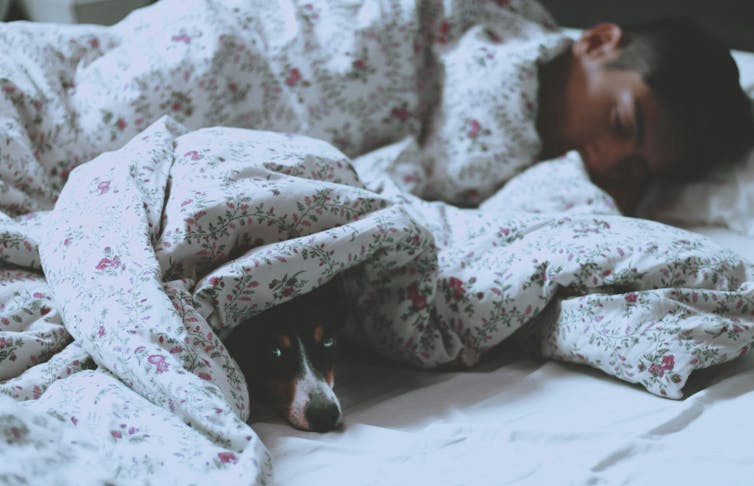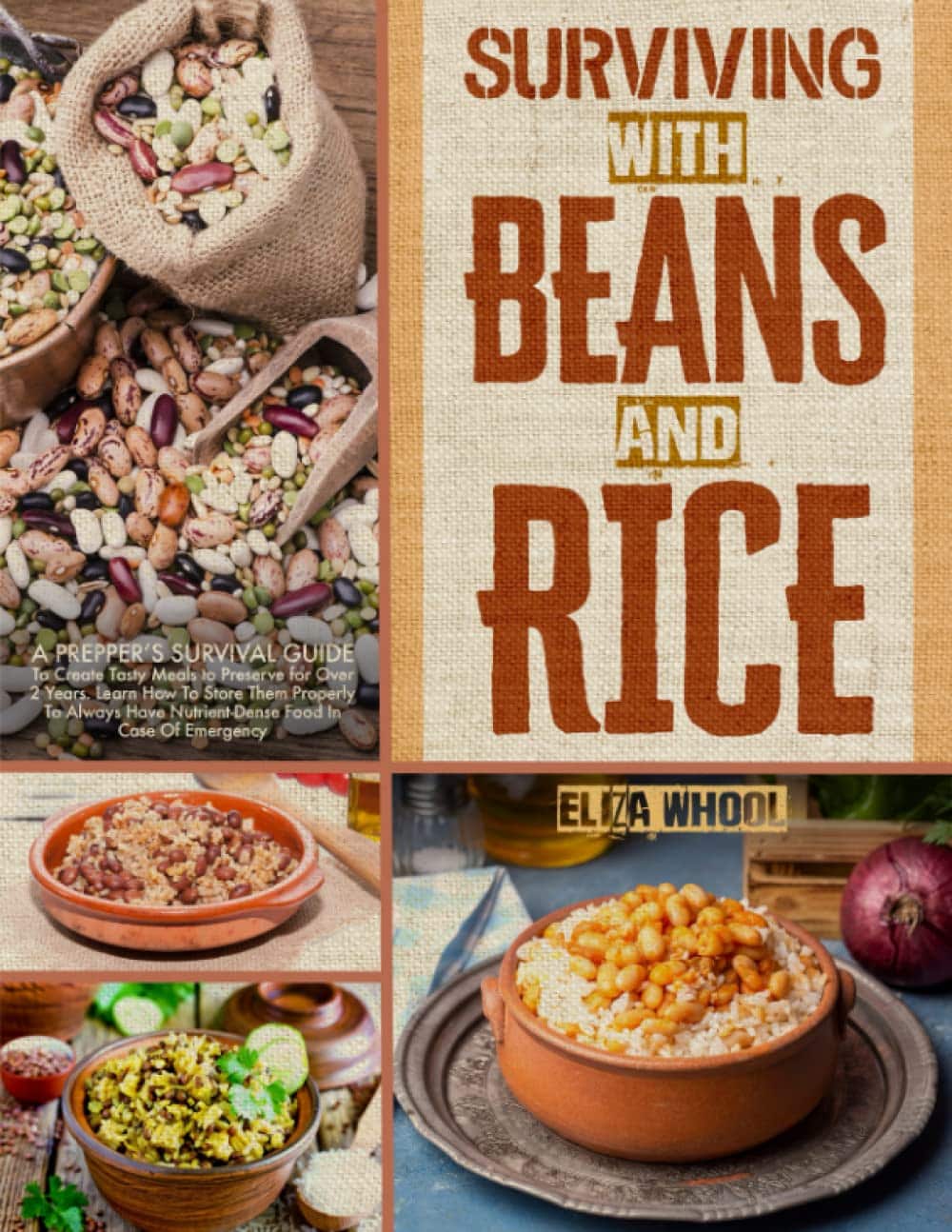
Surviving with Beans And Rice – by Eliza Whool
10almonds is reader-supported. We may, at no cost to you, receive a portion of sales if you purchase a product through a link in this article.
If you’d like to be well-set the next time a crisis shuts down supply lines, this is one of those books you’ll want to have read.
Superficially, “have in a large quantity of dried beans and rice” is good advice, but obvious. Why a book?
Whool gives a lot of advice on keeping your nutrition balanced while subsisting on the same quite few ingredients, which is handy.
More than that, she offers 100 recipes using the ingredients that will be in your long-term pantry. That’s over three months without repeating a meal! And if you don’t think rice and beans can be tasty and exciting and varied, then most of the chefs of the Global South might want to have a word about that.
Anyway, we’re not here to sell you rice and beans (we’re just enthusiastic and correct). What we are here to do is to give you a fair overview of this book.
The recipes are just-the-recipes, very simple clear instructions, one two-page spread per recipe. Most of the book is devoted to these. As a quick note, it does cover making things gluten-free if necessary, and other similar adjustments for medical reasons.
The planning-and-storage section of the book is helpful too though, especially as it covers common mistakes to avoid.
Bottom line: this is a great book, and remember what we said about doing the things now that future you will thank you for!
Get yourself a copy of Surviving with Beans And Rice from Amazon today!
Don’t Forget…
Did you arrive here from our newsletter? Don’t forget to return to the email to continue learning!
Recommended
Learn to Age Gracefully
Join the 98k+ American women taking control of their health & aging with our 100% free (and fun!) daily emails:
-
Simple, 10-Minute Hip Opening Routine
10almonds is reader-supported. We may, at no cost to you, receive a portion of sales if you purchase a product through a link in this article.
Hips Feeling Stiff?
If so, Flow with Adee’s video (below) has just the solution with a quick 10-minute hip-opening routine. Designed for intermediates but open to all, we love Adee’s work and recommend that you reach out to her to tell her what you’d like to see next.
Other Methods
If you’re a book lover, we’ve reviewed a fantastic book on reducing hip pain. Alternatively, learn stretching from a ballerina with Jasmine McDonald’s ballet stretching routine.
Otherwise, enjoy today’s video:
How was the video? If you’ve discovered any great videos yourself that you’d like to share with fellow 10almonds readers, then please do email them to us!
Share This Post
-
The Procrastination Cure – by Jeffery Combs
10almonds is reader-supported. We may, at no cost to you, receive a portion of sales if you purchase a product through a link in this article.
Why do we procrastinate? It’s not usually because we are lazy, and in fact we can often make ourselves very busy while procrastinating. And at some point, the bad feelings about procrastinating become worse than the experience of actually doing the thing. And still we often procrastinate. So, why?
Jeffery Combs notes that the reasons can vary, but generally fall into six mostly-distinct categories. He calls them:
- The neurotic perfectionist
- The big deal chaser
- The chronic worrier
- The rebellious rebel
- The drama addict
- The angry giver
These may overlap somewhat, but the differences are important when it comes to differences of tackling them.
Giving many illustrative examples, Combs gives the reader all we’ll need to know which category (or categories!) we fall into.
Then, he draws heavily on the work of Dr. Albert Ellis to find ways to change the feelings that we have that are holding us back.
Those feelings might be fear, shame, resentment, overwhelm, or something else entirely, but the tools are in this book.
A particular strength of this book is that it takes an approach that’s essentially Rational Emotive Behavior Therapy (REBT) repackaged for a less clinically-inclined audience (Combs’ own background is in marketing, not pyschology). Thus, for many readers, this will tend to make the ideas more relatable, and the implementations more accessible.
Bottom line: if you’ve been meaning to figure out how to beat your procrastination, but have been putting it off, now’s the time to do it.
Click here to check out The Procrastination Cure sooner rather than later!
Share This Post
-
How influencers and content creators discuss birth control on social media: What research shows
10almonds is reader-supported. We may, at no cost to you, receive a portion of sales if you purchase a product through a link in this article.
News articles in recent weeks have documented the spread of misinformation about hormonal birth control methods on popular social media platforms like TikTok, YouTube and X, formerly called Twitter. Influencers with large and small followings are sharing unsubstantiated claims about the side effects of contraceptives, while directly or indirectly encouraging others to stop using them.
This trend has not escaped researchers, who for several years have been investigating what people who can get pregnant are posting on social media platforms about hormonal and non-hormonal birth control methods. Understanding the drivers of these trends is important because they have implications for policy and patient care, according to researchers. Some worry that during the post-Dobbs era, when there are continued strikes against reproductive rights in the U.S., misinformation about birth control on social media could have a negative influence on contraceptive preferences — potentially leading to more unwanted pregnancies.
More than 90% of women of reproductive age have used at least one contraceptive method, according to a 2023 report by the U.S. National Center for Health Statistics. However, the report also finds that the use of male condoms and withdrawal methods increased between 2006 and 2019, while the use of the birth control pill decreased. Non-hormonal contraception methods, including condoms, spermicides, withdrawal and menstrual cycle tracking, are 10% or less effective than hormonal contraceptives. The only exceptions are surgical sterilization and the copper intrauterine device.
To be sure, not all birth control-related content posted on social media platforms is negative, studies show. Health care professionals are sharing educational material with a high rate of engagement and non-health care professional users share their positive experiences with the birth control methods they use.
But as you will see in the studies curated below, researchers also find that social media users, including influencers, share inaccurate information about hormonal contraceptives on various social media platforms, discuss their discontinuation of birth control in favor of non-hormonal methods and engage in unsubstantiated fear-mongering of hormonal contraceptives.
Researchers also have learned that the content posted on social media platforms has changed in tone over time, mirroring the shift in the national political discourse.
In a 2021 study published in the American Journal of Obstetrics & Gynecology, researchers analyzed more than 800,000 English-language tweets mentioning at least one contraceptive method between March 2006, when Twitter was founded, and December 2019. They coded the sentiment of tweets as positive, neutral or negative.
“What we found over time was that the number of neutral tweets went down for each and every one of the birth control methods, and people became more polarized with regards to how they talk on these social media platforms over those 13 years,” says study co-author Dr. Deborah Bartz, an OB-GYN at Brigham and Women’s Hospital with expertise in complex family planning and an associate professor at Harvard Medical School.
In a February 2024 commentary in the Journal of Women’s Health, University of Delaware researchers Emily Pfender and Leah Fowler argue that ongoing dialogue about contraception on social media provides “a glimpse into public sentiment about available options” to people who can get pregnant.
The authors also note that misinformation and disinformation about hormonal contraception may have a larger effect on health disparities, especially among historically marginalized groups who may already mistrust the medical establishment.
“This may contribute to unintended pregnancy and delayed care, further widening health disparities and hindering progress toward equitable reproductive health outcomes,” Pfender and Fowler write.
Side effects
There are known side effects to hormonal birth control methods, including headaches, nausea, sore breasts and spotting. Most are mild and disappear with continued use or with switching to another method. Among hormonal contraceptives, only the Depo-Provera injection has been linked with weight gain, studies show.
But some social media influencers have spread false claims about the potential side effects of hormonal birth control methods, ranging from infertility to abortion to unattractiveness. Despite these false claims, physicians and professional organizations such as the American College of Obstetricians and Gynecologists find today’s contraceptive options safe and very effective.
“They’re about the most low-risk prescription that I give,” says Dr. Megana Dwarakanath, an adolescent medicine physician in Pittsburgh. “I always joke that if something goes wrong in someone’s life, they’re within the reproductive years, it always gets blamed on birth control.”
Dwarakanath says her young patients are most worried about two side effects: weight gain and mood. “Those are the things that they will almost always attribute to their birth control at a time that their bodies are also changing very rapidly,” she says. “Things like mental health diagnoses or personality disorders also tend to crop up during the time young people have started or have been on birth control.”
Most research on the link between oral contraceptives and cancer risk comes from observational studies, according to the National Cancer Institute. Overall, the studies have consistently shown that the risks of breast and cervical cancer are slightly increased for women who use oral contraceptives, whereas the risk of endometrial, ovarian and colorectal cancers are reduced.
The use of hormonal birth control has also been associated with an increase in the risk of developing blood clots, studies show. But that risk is not universal for everyone who takes hormonal birth control. This risk is higher for women 35 and older, those who smoke, are very overweight or have a history of cardiovascular disease. Overall, 3 to 9 out of 10,000 women who take the pill are at risk of developing blood clots within a given year. The risk for women who don’t take the pill is 1 to 5 out of 10,000.
There is no association between the pill and mood disorders, according to a large body of research, including a 2021 cohort study of nearly 740,000 young women.
It’s worth noting the dearth of research into women’s reproductive health due to chronic underfunding of women’s health research. An analysis of funding by the U.S. National Institutes of Health finds that in nearly three-quarters of the cases where a disease affects mainly one gender, the institute’s funding pattern favored males. Either the disease affected more women and was underfunded, or the disease affected more men and was overfunded, according to the 2021 study published in the Journal of Women’s Health.
Aside from underfunding, conducting robust research into the long-term effects of birth control is complex.
“Historically, people haven’t felt that it’s ethically OK to randomize people to birth control methods in large part because the outcome of unintended pregnancy is greater,” for people who are given the placebo, Bartz says.
Research on birth control misinformation on social media
Social media use is widespread among young adults. More than 90% of Americans between 18 and 29 reported ever using YouTube, while 78% said they had used Instagram, 62% used TikTok and 42% used Twitter, according to a 2023 survey of 5,733 U.S. adults by Pew Research Center.
These years overlap with the demographic of people who are most likely to use birth control. And because the use of contraceptives is less stigmatized today, people are more likely to talk with one another about their questions and concerns or share that information online.
In addition to investigating the general landscape of social media posts about birth control, researchers are also interested in the type of content influencers, who typically have 20,000 or more followers, post, because of their persuasive power over their audiences.
“When influencers disclose personal experiences and beliefs about various topics, audience members tend to form similar attitudes especially when they feel connected to the influencer,” Pfender and M. Marie Devlin write in a 2023 study published in the journal Health Communication.
Below we have curated several studies published in recent years documenting the spread of birth control misinformation on social media. The roundup is followed by a quick reference guide on female contraceptives and their actual potential side effects.
Contraceptive Content Shared on Social Media: An Analysis of Twitter
Melody Huang, et al. Contraception and Reproductive Medicine, February 2024.The study: The authors explore how contraceptive information is shared on X and understand how those posts affect women’s decisions. They analyze a random 1% of publicly available English-language tweets about reversible prescription contraceptive methods, from January 2014 and December 2019. The 4,434 analyzed tweets included at least 200 tweets per birth control method — IUDs, implants, the pill, patch and ring.
The findings: 26.7% of tweets about contraceptive methods discussed decision-making and 20.5% discussed side effects, especially the side effects of IUDs and the depot medroxyprogesterone acetate (DMPA or Depo-Provera) shot. Discussions about the pill, patch or ring prompted more discussions on logistics and adherence. About 6% of tweets explicitly requested information. Tweets about IUDs were most popular in terms of likes.
More importantly, 50.6% of the tweets were posted by contraceptive users, while only 6% came from official health or news sources. Tweets from news or journalistic sources were more frequent than tweets from a health care professional or organization.
Some tweets contained misinformation represented as facts, such as the unsubstantiated claim that IUDs can cause fertility issues. Others were outwardly misogynistic, shaming women and claiming that they wouldn’t be able to have kids because of using hormonal birth control.
One takeaway: “While Twitter may provide valuable insight, with more tweets being created by personal contraceptive users than official healthcare sources, the available information may vary in reliability. Asking patients about information from social media can help reaffirm to patients the importance of social networks in contraceptive decision-making while also addressing misconceptions to improve contraceptive counseling,” the authors write.
What Do Social Media Influencers Say About Birth Control? A Content Analysis of YouTube Vlogs About Birth Control
Emily J. Pfender and M. Marie Devlin. Health Communication, January 2023.The study: To explore what social media influencers shared on YouTube about their experiences with hormonal and non-hormonal methods of birth control, the researchers analyzed 50 vlogs posted between December 2019 and December 2021. Most of the 50 influencers were categorized on YouTube as Lifestyle (72%) and Fitness (16%). They had between 20,000 and 2.2 million subscribers each.
The findings: In total, 74% of the influencers talked about discontinuing hormonal birth control. About 44% said the main reason they were discontinuing birth control was to be more natural, while 32% said they wanted to improve their mental health and 20% were concerned about weight gain.
Forty percent of influencers mentioned using non-hormonal birth control methods such as menstrual cycle tracking, condoms, non-hormonal IUDs and the pull-out method. Twenty percent reported switching from hormonal to non-hormonal methods.
One takeaway: “Our content analysis revealed that discontinuation of hormonal birth control is commonly discussed among [social media influencers] on YouTube and sexual health information from influencers might not provide accurate educational information and tools… this is especially concerning given that social media is young adults’ primary tool for sexual health information. Future research is needed to understand the effects of SMI birth control content on sexual health behaviors,” the authors write.
Hormonal Contraceptive Side Effects and Nonhormonal Alternatives on TikTok: A Content Analysis
Emily J. Pfender, Kate Tsiandoulas, Stephanie R. Morain and Leah R. Fowler. Health Promotion Practice, January 2024.The study: The authors analyzed the content of 100 TikTok videos that used the hashtags #birthcontrolsideeffects and #nonhormonalcontraception. Their goal was to understand the types of content about side effects of hormonal and non-hormonal contraceptives on TikTok.
The findings: The videos averaged about 1 minute and garnered an average of 27,795 likes, 251 comments and 623 shares. For #birthcontrolsideeffects, 80% of the audience was 18 to 24 years old and videos with that hashtag had 43 million views worldwide as of July 7, 2023.
Thirty-two percent of the videos were by regular users (non-influencers), 26 by clinicians, 13% by health coaches and 2% by companies. Only 3% had a sponsorship disclosure and 6% included a medical disclaimer, that the person was not a doctor or was not providing medical advice.
Most of the 100 videos (71%) mentioned hormonal contraception. Among them 51% discussed unspecific hormonal contraceptives, 31% talked about the pill and 11% about hormonal IUDs. Four of the 71 creators explicitly recommended against using hormonal contraceptives.
Claims about hormonal contraceptives were mostly based on personal experience. About 25% of the creators cited no basis for their claims, 23% included outside evidence, including unspecified studies or information from the FDA insert, and 11% used a combination of personal and outside evidence.
Almost half (49%) mentioned discontinuing their hormonal contraception, with negative side effects cited as the most common reason.
The creators talked about mental health issues, weight gain, headaches, and less common risks of various cancers or chronic illness, change in personality and blood clots. They were less likely to mention the positive aspects of birth control.
About 52% of videos mentioned non-hormonal contraception, including copper IUDs and cycle tracking.
Nine of the 100 creators expressed feeling dismissed, pressured, gaslit or insufficiently informed about contraception by medical providers.
One takeaway: “Our findings support earlier work suggesting social media may fuel ‘hormonophobia,’ or negative framing and scaremongering about hormonal contraception and that this phobia is largely driven by claims of personal experience rather than scientific evidence,” the authors write. “Within these hashtag categories, TikTok creators frame their provider interactions negatively. Many indicate feeling ignored or upset after medical appointments, not sufficiently informed about contraceptive options, and pressured to use hormonal contraceptives. This finding aligns with previous social media research and among the general population, suggesting opportunities for improvements in contraceptive counseling.”
Popular Contraception Videos on TikTok: An Assessment of Content Topics
Rachel E. Stoddard, et al. Contraception, January 2024.The study: Researchers analyzed 700 English-language TikTok videos related to hormonal contraception, with a total of 1.2 billion views and 1.5 million comments, posted between October 2019 and December 2021. Their aim was to explore the types of contraception content on TikTok and to understand how the platform influences the information patients take into birth control counseling visits.
The findings: More than half of the videos (52%) were about patient experiences and how to use contraceptives. Other common topics included side effects (35%) and pregnancy (39%).
Only 19% of the videos were created by health care professionals, including midwives, physician assistants and medical doctors, although those videos garnered 41% of the total views, indicating higher engagement. While 93% of health care providers shared educational content, 23% of non-health care providers shared educational content.
One takeaway: “Our findings show an exceptional opportunity for education around contraception for young reproductive-aged individuals, given the accessibility and popularity of these videos. This may also extend to other topics around sex education and family planning, including sexually transmitted infection prevention and treatment and procuring abortion care,” the authors write.
TikTok, #IUD, and User Experience With Intrauterine Devices Reported on Social Media
Jenny Wu, Esmé Trahair, Megan Happ and Jonas Swartz. Obstetrics & Gynecology, January 2023.The study: Researchers used a web-scraping application to collect the top 100 TikTok videos tagged #IUD on April 6, 2022, based on views, comments, likes and shares. Their aim was to understand the perspectives and experiences of people with IUDs shared on TikTok. The videos had a total of 471 million views, 32 million likes and 1 million shares. Their average length was 33 seconds.
The findings: Some 89% of the creators identified as female and nearly 90% were from the United States; 37% were health care professionals; and 78% were 21 years or older.
Video types included patients’ own experiences with IUD removal (32%), educational (30%) and humorous (25%). More videos (38%) had a negative tone compared with 19% with a positive tone. The videos that portrayed negative user experiences emphasized pain and distrust of health care professionals.
Half of the videos were very accurate, while nearly a quarter were inaccurate (the authors did not use the term misinformation).
One takeaway: “The most liked #IUD videos on TikTok portray negative experiences related to pain and informed consent. Awareness of this content can help health care professionals shape education given the high prevalence of TikTok use among patients,” the authors write. “TikTok differs from other platforms because users primarily engage with an algorithmically curated feed individualized to the user’s interests and demographics.”
Types of female birth control
Most female hormonal contraceptives contain the synthetic version of natural female hormones estrogen and progesterone. They affect women’s hormone levels, preventing mature eggs from being released by the ovaries, a process that’s known as ovulation, hence, preventing a possible pregnancy.
Of the two hormones, progesterone (called progestin in synthetic form) is primarily responsible for preventing pregnancy. In addition to playing a role in preventing ovulation, progesterone inhibits sperm from penetrating through the cervix. Estrogen inhibits the development of follicles in the ovaries.
The information below is sourced from the CDC, the National Library of Medicine, the Cleveland Clinic and the Mayo Clinic.
Intrauterine contraception
Also called Long-Acting Reversible Contraception, or LARC, this method works by thickening the cervical mucus so the sperm can’t reach an egg. There are two types of IUDs: hormonal and non-hormonal.
- Levonorgestrel intrauterine system is a T-shaped device that’s placed inside the uterus by a doctor. It releases a small amount of progestin daily to prevent pregnancy. It can stay in place for 3 to 8 years. Its failure rate is 0.1% to 0.4%.
- Copper T intrauterine device is also T-shaped and is placed inside the uterus by a doctor. It does not contain hormones and can stay in place for up to 10 years. Its failure rate is 0.8%.
- Side effects: Copper IUDs may cause more painful and heavy periods, while progestin IUDs may cause irregular bleeding. In the very rare cases of pregnancy while having an IUD, there’s a greater chance of an ectopic pregnancy, which is when a fertilized egg grows outside of the uterus.
Hormonal methods
- The implant is a single, thin rod that’s inserted under the skin of the upper arm. It releases progestin over 3 years. Its failure rate is 0.1%, making it the most effective form of contraception available.
- Side effects: The most common side effect of an implant is irregular bleeding.
- The injection Depo-Provera or “shot” or “Depo” delivers progestin in the buttocks or arms every three months at the doctor’s office. Its failure rate is 4%.
- Side effects: The shot may cause irregular bleeding. The shot is also the only contraceptive that may cause weight gain. It may also be more difficult to predict when fertility returns once the shot is stopped.
- Combined oral contraceptives or “the pill” contain estrogen and progestin. They’re prescribed by a doctor. The pill has to be taken at the same time daily. The pill is not recommended for people who are older than 35 and smoke, have a history of blood clots or breast cancer. Its failure rate is 7%. Among women aged 15 to 44 who use contraception, about 25% use the pill.
- The skin patch is worn on the lower abdomen, buttocks or upper body, releasing progestin and estrogen. It is prescribed by a doctor. A new patch is used once a week for three weeks. No patch is worn for the fourth week. Its failure rate is 7%.
- Hormonal vaginal contraceptive ring releases progestin and estrogen. It’s placed inside the vagina. It is worn for three weeks and taken out on the fourth week. Its typical failure rate is 7%.
- Side effects: Contraceptives with estrogen, including the pill, the patch and the ring, increase the risk of developing blood clots.
- Progestin-only pill or “mini-pill” only has progestin and is prescribed by a doctor. It has to be taken daily at the same time. It may be a good option for women who can’t take estrogen. Its typical failure rate is 7%.
- Opill is the first over-the-counter daily oral contraceptive in the U.S., approved by the Food and Drug Administration in 2023. Opill only has progestin and like other birth control pills, it has to be taken at the same time every day. It should not be used by those who have or have had breast cancer. Its failure rate is 7%.
- Side effects: The most common side effect of progestin-only pills is irregular bleeding, although the bleeding tends to be light.
Non-hormonal birth control methods include using barriers such as a diaphragm or sponge, condoms and spermicides, withdrawal, and menstrual cycle tracking. Emergency contraception, including emergency contraception pills (the morning-after pill), is not a regular method of birth control.
Additional research studies to consider
Population Attitudes Toward Contraceptive Methods Over Time on a Social Media Platform
Allison A. Merz, et al. American Journal of Obstetrics & Gynecology, December 2020.Social Media and the Intrauterine Device: A YouTube Content Analysis
Brian T. Nguyen and Allison J. Allen. BMJ Sexual and Reproductive Health, November 2017.This article first appeared on The Journalist’s Resource and is republished here under a Creative Commons license.
Share This Post
Related Posts
-
Eat More, Live Well – by Dr. Megan Rossi
10almonds is reader-supported. We may, at no cost to you, receive a portion of sales if you purchase a product through a link in this article.
Often, eating healthily can feel restrictive. Don’t eat this, skip that, eliminate the other. Where is the joy?
Dr. Megan Rossi brings a scientific angle on positive dieting, that is to say, looking at what to add, rather than what to subtract. Now, the idea isn’t to have sugar-laden chocolate cake with berries on top and call it a net positive because of the berries, though. Rather, Dr. Rossi lays out how to include as many diverse vegetables and fruits as possible, with tasty recipes so that we’re too busy with those to crave junk food.
Speaking of recipes, there are 80, and they are easy to follow. She describes them as “plant-based”, and by this what she really means is “plant-centric” or such; she does include the use of some animal products.
This is important to note, because general convention is to use “plant-based” to mean functionally vegan, but being about the food rather than the ideology; a relevant distinction in both society and science. In the case of this book, it’s neither, but it is very healthy.
Bottom line: if you’d like to introduce more healthy diversity to your diet, rather than eating the same three fruits and five vegetables, but you’re not sure how, this book will get you where you need to be.
Click here to check out Eat More, Live Well, and diversify your diet!
Don’t Forget…
Did you arrive here from our newsletter? Don’t forget to return to the email to continue learning!
Learn to Age Gracefully
Join the 98k+ American women taking control of their health & aging with our 100% free (and fun!) daily emails:
-
The Gift Of Aging − by Dr. Elizabeth Eckstrom & Marcy Houle
10almonds is reader-supported. We may, at no cost to you, receive a portion of sales if you purchase a product through a link in this article.
This is, as you may gather from the title, a book about getting the most out of growing older, and doing it well.
Not all of it is positive though; some of it really is about avoiding, mitigating, or coping with the negatives that tend to come with aging.
The book is full of many (38) small self-contained chapters, so it’s well-suited to reading bit-by-bit, if so inclined. Essentially, it’s a collection of essays by the two authors, arranged into categories:
- Caring for your mind
- Caring for your body
- Caring for yourself and your family
- Caring for your soul
The first two sections are mostly self-explanatory; the third is largely about estate-planning of various kinds. The fourth is highly subjective, and/but not particularly religious, by the way. It’s largely an add-on to the “caring for your mind” mental health section, but now more specifically dealing with heavy topics such as the emotional side of mortality (as opposed to the previous section’s practical considerations of same), loss, and grief.
The style is the very low end of pop-science; facts (probably true ones; nothing seemed very contentious objectively) are stated with no sources, and there is no medical jargon that’s anything more complicated than you might find on a leaflet in a doctor’s waiting room.
Bottom line: this is a very opinion-filled book, so it’s worth reading with that in mind (i.e. their opinions may differ wildly from yours in some cases), but it’s largely informed opinions, so worth at least considering even in those cases. If nothing else, this book is certainly thought-provoking.
Click here to check out The Gift Of Aging, and enjoy the gift of aging!
Don’t Forget…
Did you arrive here from our newsletter? Don’t forget to return to the email to continue learning!
Learn to Age Gracefully
Join the 98k+ American women taking control of their health & aging with our 100% free (and fun!) daily emails:
-
Is owning a dog good for your health?
10almonds is reader-supported. We may, at no cost to you, receive a portion of sales if you purchase a product through a link in this article.
Australia loves dogs. We have one of the highest rates of pet ownership in the world, and one in two households has at least one dog.
But are they good for our health?
Mental health is the second-most common reason cited for getting a dog, after companionship. And many of us say we “feel healthier” for having a dog – and let them sleep in our bedroom.
Here’s what it means for our physical and mental health to share our homes (and doonas) with our canine companions.
Pogodina Natalia/Shutterstock Are there physical health benefits to having a dog?
Having a dog is linked to lower risk of death over the long term. In 2019, a systematic review gathered evidence published over 70 years, involving nearly four million individual medical cases. It found people who owned a dog had a 24% lower risk of dying from any cause compared to those who did not own a dog.
Having a dog may help lower your blood pressure through more physical activity. Barnabas Davoti/Pexels Dog ownership was linked to increased physical activity. This lowered blood pressure and helped reduce the risk of stroke and heart disease.
The review found for those with previous heart-related medical issues (such as heart attack), living with a dog reduced their subsequent risk of dying by 35%, compared to people with the same history but no dog.
Another recent UK study found adult dog owners were almost four times as likely to meet daily physical activity targets as non-owners. Children in households with a dog were also more active and engaged in more unstructured play, compared to children whose family didn’t have a dog.
Exposure to dirt and microbes carried in from outdoors may also strengthen immune systems and lead to less use of antibiotics in young children who grow up with dogs.
Children in households with a dog were often more active. Maryshot/Shutterstock Health risks
However, dogs can also pose risks to our physical health. One of the most common health issues for pet owners is allergies.
Dogs’ saliva, urine and dander (the skin cells they shed) can trigger allergic reactions resulting in a range of symptoms, from itchy eyes and runny nose to breathing difficulties.
A recent meta-analysis pooled data from nearly two million children. Findings suggested early exposure to dogs may increase the risk of developing asthma (although not quite as much as having a cat does). The child’s age, how much contact they have with the dog and their individual risk all play a part.
Slips, trips and falls are another risk – more people fall over due to dogs than cats.
Having a dog can also expose you to bites and scratches which may become infected and pose a risk for those with compromised immune systems. And they can introduce zoonotic diseases into your home, including ring worm and Campylobacter, a disease that causes diarrhoea.
For those sharing the bed there is an elevated the risk of allergies and picking up ringworm. It may result in lost sleep, as dogs move around at night.
On the other hand some owners report feeling more secure while co-sleeping with their dogs, with the emotional benefit outweighing the possibility of sleep disturbance or waking up with flea bites.
Proper veterinary care and hygiene practices are essential to minimise these risks.
Many of us don’t just share a home with a dog – we let them sleep in our beds. Claudia Mañas/Unsplash What about mental health?
Many people know the benefits of having a dog are not only physical.
As companions, dogs can provide significant emotional support helping to alleviate symptoms of anxiety, depression and post-traumatic stress. Their presence may offer comfort and a sense of purpose to individuals facing mental health challenges.
Loneliness is a significant and growing public health issue in Australia.
In the dog park and your neighbourhood, dogs can make it easier to strike up conversations with strangers and make new friends. These social interactions can help build a sense of community belonging and reduce feelings of social isolation.
For older adults, dog walking can be a valuable loneliness intervention that encourages social interaction with neighbours, while also combating declining physical activity.
However, if you’re experiencing chronic loneliness, it may be hard to engage with other people during walks. An Australian study found simply getting a dog was linked to decreased loneliness. People reported an improved mood – possibly due to the benefits of strengthening bonds with their dog.
Walking a dog can make it easier to talk to people in your neighbourhood. KPegg/Shutterstock What are the drawbacks?
While dogs can bring immense joy and numerous health benefits, there are also downsides and challenges. The responsibility of caring for a dog, especially one with behavioural issues or health problems, can be overwhelming and create financial stress.
Dogs have shorter lifespans than humans, and the loss of a beloved companion can lead to depression or exacerbate existing mental health conditions.
Lifestyle compatibility and housing conditions also play a significant role in whether having a dog is a good fit.
The so-called pet effect suggests that pets, often dogs, improve human physical and mental health in all situations and for all people. The reality is more nuanced. For some, having a pet may be more stressful than beneficial.
Importantly, the animals that share our homes are not just “tools” for human health. Owners and dogs can mutually benefit when the welfare and wellbeing of both are maintained.
Tania Signal, Professor of Psychology, School of Health, Medical and Applied Sciences, CQUniversity Australia
This article is republished from The Conversation under a Creative Commons license. Read the original article.
Don’t Forget…
Did you arrive here from our newsletter? Don’t forget to return to the email to continue learning!
Learn to Age Gracefully
Join the 98k+ American women taking control of their health & aging with our 100% free (and fun!) daily emails:

